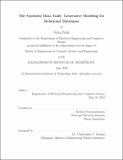| dc.contributor.advisor | Kalyan Veeramachaneni. | en_US |
| dc.contributor.author | Patki, Neha (Neha R.) | en_US |
| dc.contributor.other | Massachusetts Institute of Technology. Department of Electrical Engineering and Computer Science. | en_US |
| dc.date.accessioned | 2017-06-06T18:44:28Z | |
| dc.date.available | 2017-06-06T18:44:28Z | |
| dc.date.copyright | 2016 | en_US |
| dc.date.issued | 2016 | en_US |
| dc.identifier.uri | http://hdl.handle.net/1721.1/109616 | |
| dc.description | Thesis: M. Eng. in Computer Science and Engineering, Massachusetts Institute of Technology, Department of Electrical Engineering and Computer Science, 2016. | en_US |
| dc.description | This electronic version was submitted by the student author. The certified thesis is available in the Institute Archives and Special Collections. | en_US |
| dc.description | Cataloged from student-submitted PDF version of thesis. | en_US |
| dc.description | Includes bibliographical references (pages 79-80). | en_US |
| dc.description.abstract | The goal of this thesis is to build a system that automatically creates synthetic data for enabling data science endeavors. To meet this goal, we present the Synthetic Data Vault (SDV), a system that builds generative models of relational databases. We are able to sample from the model and create synthetic data, hence the name SDV. When implementing the SDV, we developed an algorithm that computes statistics at the intersection of related database tables. We then use a state-of-the-art multivariate modeling approach to model this data. The SDV iterates through all possible relations, ultimately creating a model for the entire database. Once this model is computed, the same relational information allows the SDV to synthesize data by sampling from any part of the database. After building the SDV, we used it to generate synthetic data for five different publicly available datasets. We then published the datasets and asked data scientists to develop predictive models for them as part of a crowdsourced experiment. On May 18, 2016, preliminary analysis from the ongoing experiment provided evidence that the synthetic data can successfully replace original data for data science. Our analysis indicates that there is no significant difference in the work produced by data scientists who used synthetic data as opposed to real data. We conclude that the SDV is a viable solution for synthetic data generation. Our primary contribution is that we designed and implemented the first generative modeling system for relational databases that demonstratively synthesizes realistic data. | en_US |
| dc.description.statementofresponsibility | by Neha Patki. | en_US |
| dc.format.extent | 80 pages | en_US |
| dc.language.iso | eng | en_US |
| dc.publisher | Massachusetts Institute of Technology | en_US |
| dc.rights | MIT theses are protected by copyright. They may be viewed, downloaded, or printed from this source but further reproduction or distribution in any format is prohibited without written permission. | en_US |
| dc.rights.uri | http://dspace.mit.edu/handle/1721.1/7582 | en_US |
| dc.subject | Electrical Engineering and Computer Science. | en_US |
| dc.title | The Synthetic Data Vault : generative modeling for relational databases | en_US |
| dc.title.alternative | SDV : generative modeling for relational databases | en_US |
| dc.title.alternative | Generative modeling for relational databases | en_US |
| dc.type | Thesis | en_US |
| dc.description.degree | M. Eng. in Computer Science and Engineering | en_US |
| dc.contributor.department | Massachusetts Institute of Technology. Department of Electrical Engineering and Computer Science | |
| dc.identifier.oclc | 988748156 | en_US |
